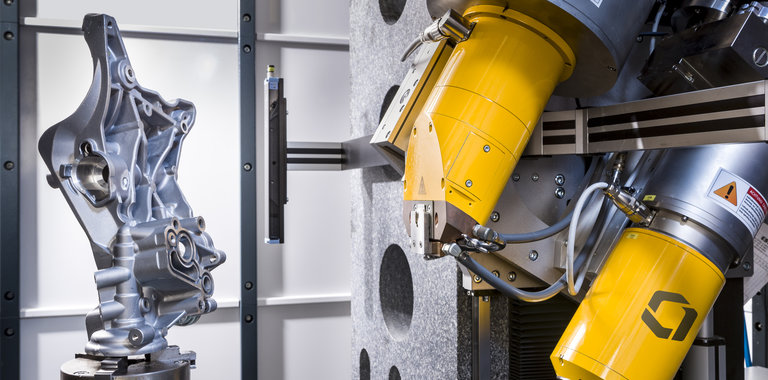
辐射测量和个人防护装备
From what has been said before, it follows that establishing the presence of ionising radiation and measuring its level is of paramount importance. Since ionising radiation cannot be detected by the senses, detectors and measuring equipment are used. There are various instruments with which the radiographer can measure or register radiation. The most common measuring instruments are:
- Dose rate meters
- Scintillation counters
The most common instruments for personal protection are:
- Pendosismeter (PDM)
- Thermoluminescent badge (TLD)
- Film badge
Radiation measuring instruments
Dose rate meters
A portable Geiger-Müller counter of 7 x 15 x 4 cm, see figure 1-19, is the most commonly used instrument for
measuring dose rate, but the more accurate and more expensive ionisation chamber is used as radiation monitor as well. Both instruments measure the electric current that is produced by ionisation. The radiation level can be read instantly off a micro-ampere meter with a μSv/h or mSv/h calibrated scale. Some radiation monitors give an audible signal when a pre-set dose is exceeded. The instruments are used by personnel working with radioactive material or X-ray equipment, to determine the safe distance and the dose rate of for instance 10 μSv/h at the safety barrier. A GM-counter has a measuring range from 1 μSv/h to 2 mSv/h.
Scintillation counter
This is an accurate and multifunctional instrument to measure and analyse radiation. The incidence of ionising radiation on a Sodium-iodine crystal is converted into weak light flashes, which are amplified into electric pulses by an integrated photo-multiplier. By measuring amplitude and number of these electric pulses, energy and intensity (dose rate) of the radiation can be determined. These instruments are predominantly used for scientific purposes.
Personal protection equipment
Pendosismeter (PDM)
The PDM consists of a quartz fibre electrometer and a simple optic lens system housed in a
fountain pen type holder, see figure 2-19. A small charging unit is used to electrically charge the fibre, which can then be viewed through the lens. The fibre is set on the zero mark of the calibrated scale as initial setting for the work period. Any radiation will cause the charge to leak away through its ionising effect and the fibre will move across the scale. The amount of radiation received can be read off the calibrated scale. This type of instrument is excellent for personal protection as it is small, inexpensive and reasonably robust. It can be easily read and records the total amount of radiation received for the work period with an accuracy of ±10 %.
热释光剂量计(TLD 剂量牌)
TLD 剂量计包含一个带有多个圆孔的铝板。 其中的两个圆孔装 有发光晶体。 图 3-19 展示了一个打开的 TLD 剂量计旁边 是带晶体的铝板)。 示意图的右侧 展示的是同一支 剂量计,但是处于关闭状态。 读取 剂量计数值时,只需
用到一个发光晶体来确定每月 剂量。 另一个为备用 发光晶体,在需要时可读取其数值,以 确定累积剂量。
TLD 剂量计对 30 keV 或以上的 X 射线和伽马射线辐射敏感。 剂量计具备 很大的剂量测量范围(从 0.04 mSv 到 100 mSv,准确性 达到 ±5 %)。该仪器尺寸 为 60 x 40 x 10 mm,非常方便佩戴。
胶片剂量计(胶片剂量牌)
胶片剂量计由放置在特殊支架内的两张带滤波器的 X 射线胶片组成。 在规定 的时间段结束时可将胶片冲洗出来并
测量密度。然后,可以通过观察密度/暴露曲线 确定佩戴者遭受的辐射剂量,而且可以通过检查滤波器后方的密度
来确定佩戴者所遭受辐射的类型。 图 4-19 中所示的 胶片剂量计价格很低,但不失为一种对特定区域内人员
进行监测的准确方法。 它们的尺寸为 25 x 25 x 5 mm,非常耐用,且 很方便佩戴。





